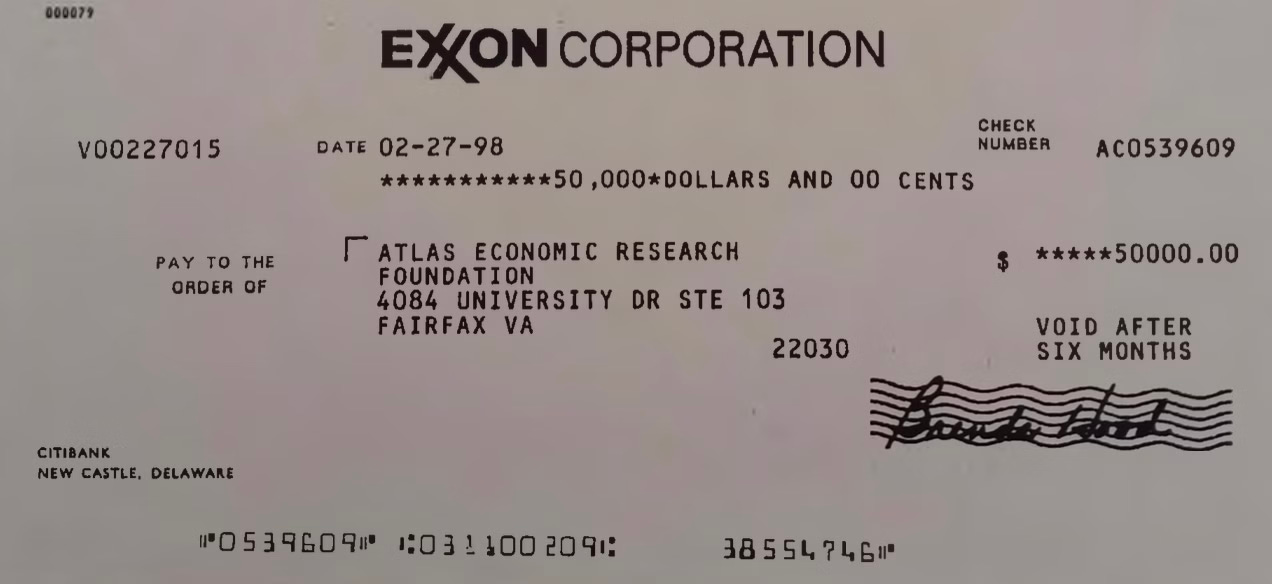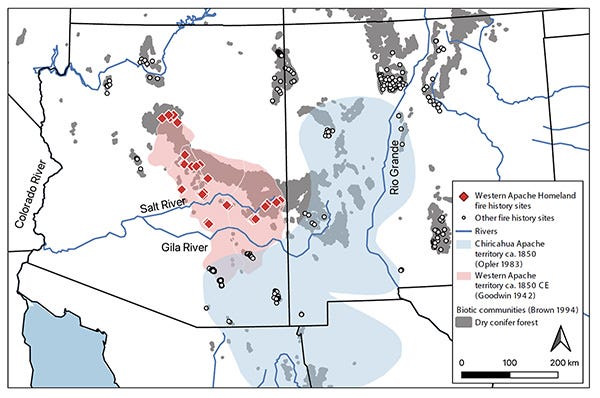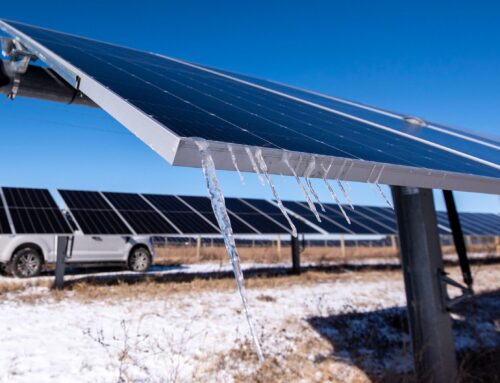Free Electricity. Like, at no cost. For everyone. Now.
November 5, 2025
Let’s talk about affordability, abundance, and Australia–and why thanks to Trump we can’t have nice things
Last night’s elections were a tonic. Many of us across the country worked awfully hard in the months leading up to them (I got to lead phonebanks on Prop 50 in California and the Public Service Commission election in Georgia, and Third Actors were engaged absolutely everywhere) but I was so used to the feeling of dread that comes at 7 pm on election night that I could hardly eat dinner. And then—Americans showed that the idea of this country is not dead just yet. We elected Muslims to historic office in the two states targeted on 9/11, we elected climate-conscious candidates to help run Georgia’s massive energy system—but more than that we began the repudiation of Trump and Trumpism. There is so so much more work to do, but as war leader Winston Churchill said after an early triumph in North Africa, “we have reached the end of the beginning.” As AOC—for my money perhaps the best political analyst in the country—put it, Americans understood “the assignment of fighting fascism right now. And the assignment is to come together across difference no matter what.”
I’m unwilling to kill my good mood in any way, so I’m going to tell you another entirely happy news story from this week, one that could, I think, be used by Democrats in next year’s midterms as an example of what we’re getting screwed out of by President Poopjet. This comes from Down Under, where the Australian government announced that, beginning next year in much of the country and spreading to the rest by 2027, all residents will getthree free hours of electricity every afternoon.
This “Solar Sharer” plan announced on Monday is possible precisely because Australia has built so much solar power. The sun, you may have noticed, is highest in the sky around noon and so all those panels generate power best in the middle of the day—so much of it that wholesale electric prices often go negative in those hours, in many parts of the world. Taking advantage of that fact, as Jameson Dow reported yesterday,
The Australian government has decided on a scheme to bring those electricity savings to the consumer, with what its calling its “Solar Sharer” program.
The program would require electricity retailers to provide free electricity to everyone for at least three hours a day, in recognition of the incredibly low wholesale cost of electricity during daytime due to extensive solar power penetration.
These would likely be in the middle of the day, when most people aren’t home. However, every home has some amount of shiftable electricity load, and the Solar Sharer scheme would encourage people to make use of that. With modern appliances that can be scheduled to start in the middle of the day, people can just plan to do laundry, run the dishwasher, run the pool pump, or charge their car at noon, instead of whenever else they were going to.
Additionally, people could fill up a home battery during the day, and then use that electricity during peak hours when rates are higher. And this plan will help to incentivize private installation of batteries, or other shiftable loads.
This plan has all sorts of benefits—it should lower peak use in the evening time, which will save the system money otherwise needed to build new peak power supply, for instance. It was of course attacked by the conservative parties in Australia, who want to use more coal. And utilities say they feel unfairly put upon—the new policy, their trade group complained, risked “damaging industry confidence, as well as creating the potential for unintended consequences.” But Australia’s Labor Party leaders said they didn’t really care. Chris Bowen, energy minister: “I work well with energy companies but they are not first — consumers are put first,” he said. (This, by the way, is how politicians should talk—see, for instance, Mayor Mamdani).
Here’s the bottom line: Australia has enough solar power, and that solar power is so cheap, that now people who live there will get to have it for free. They will be, every afternoon, energy-rich. With just a little bit of care, they’ll be able to get done most of what needs doing for free. We’ve heard a lot of talk from American politicians and thought leaders this year about “abundance” and “affordability.” This is the best example of those ideas I’ve ever heard or seen. For the first time in human history, large numbers of those humans will have access to energy for free.
I predict that it will be among the more politically popular moves in history. I predict no one will propose repealing it. I bet that before long there will be Australian politicians running on five hours of free power.
And I predict that some astute American politicians will start using this remarkable development to point out the obvious and painful truth about our own country: that president Trump and the corrupt fossil fuel cronies that surround him have done everything they can to make sure Americans will never get to share in this kind of bounty. Not because we lack sunshine—because we lack politicians willing and able to make use of our ample sun and wind to get this job done.
It would not surprise me if ambitious leaders in California proposed something similar—they have an abundance of afternoon sun as well. And Texas could probably do the same. But not, say, the mid-Atlantic and midwestern states served by the PJM Interconnection, where electricity prices are soaring. Here’s how the Inside Climate News helped explain that fact a couple of months ago
PJM has an online queue in which owners of prospective power plants get in line to gain approval to hook up to interstate power lines. Ideally, this would be a fast process, but the queue has turned into a quagmire of long waits, meaning the grid isn’t getting some of the new power plants that would otherwise be ready.
Most of the affected projects are solar arrays, the results of a solar boom across much of PJM territory.
As one advocate explained
“The power grid operator’s policy decisions too often favor outdated, expensive power plants and needlessly block low-cost clean energy resources and battery projects from connecting to the grid and bringing down prices,” said Sarah Moskowitz, executive director of the Citizens Utility Board of Illinois, in a statement. “This extended price spike was preventable.”
Andrew Meyer at Fast Company had a valuable long account of the problems that our slow and corrupt regulators have created, and how we might be able to start fixing it.
Over 120 million smart meters are installed nationwide, covering more than 75% of U.S. homes and businesses. Smart thermostats, EV chargers, and home batteries are becoming more common, and these devices can automatically shift usage without impacting comfort or convenience.
The impact of even small shifts is enormous. Simply moving demand during the top 2% of peak hours could unlock 126 GW of capacity, enough to meet projected demand growth through 2030 and avoid $250 billion in new power plant construction.
Smart policy makers in these states are doing their best to remedy this as best they can. Governor J.B. Pritzker of Illinois, in between trying to keep ICE from roughing up daycare teachers as their young charges look on in horror, is expected to soon sign a new bill that creates big incentives for grid batteries, and a “virtual power plant” to hook together home batteries across the state. It will help. And it’s not as if there’s any shortage of good ideas around the world—just this week South Korea mandated that every parking lot with more than 80 spaces be covered with a solar canopy
In addition to creating jobs and working to stabilize the local grid with more renewable energy, the proposed solar canopies will offer a number of practical, day-to-day benefits for Korean drivers, as well.
The shaded structures will protect vehicles from heavy rain, snow, and the blistering summer sun — keeping interiors cooler, extending the life of plastics and upholstery, and even helping to preserve battery range in EVs and PHEVs by reducing their AC loads (and, of course, provide charging while the cars are parked).
But along with smart policy making, it’s also going to be important for every single Democratic politician across the country to make the same rhetorical point over and over again: Trump and a compliant GOP have increased demand for electricity by pushing data centers everywhere, at the same time that they have literally prohibited new windfarms and solar arrays. They literally stopped a project in Nevada last month that would have powered two million homes—it would have been the biggest such array in America; indeed, it would have been larger than any single solar farm in Australia.
As John K. White writes in Counterpunch
The US is losing economic advantage with each cancelled project, including 223 previously awarded projects valued at over $7.5 billion. As America turns its back on progress, China is building the world’s largest solar farm, a 15-GW PV installation in the Tibetan Plateau, while India is on track to reach 500 GW of renewable energy by 2030. The 3.6-GW Dogger Bank Wind Farm in the North Sea will be the world’s largest upon completion in 2027, powering “the equivalent of six million homes in the UK,” while France is building the largest offshore wind farm, a 1.5-GW installation 40 km off the Normandy coast.
But we can’t have it because our Leader hates solar power (“it’s all steel and glass and wires and looks like hell. And you see rabbits, they get caught in it”) and he hates windpower (because of the view off the ninth fairway of his Scottish resort) and because he loves the money that Big Oil showers on him. (He once said of Harold Hamm, the fracking exec who led his fundraising efforts in 2024 and who is now helping to bankroll the destruction of the East Wing and the construction of the Ramada Donald J. Trump ballroom: “he understand energy better than anybody else.”) And it’s not just Trump—his sidekick RFK Jr (the R and K are for roadkill, I think), has, according to Reuters, commissioned a study from the Centers for Disease Control to prove that the windmills he doesn’t want to see off his Cape Cod beach are causing…something bad. “The report added that the office of the U.S. surgeon general has also been involved in the initiative, which the HHS, prior to the ongoing government shutdown, aimed to have completed within a couple of months.”
We can’t have nice things because we’ve let corrupt grifters run our country, and because we’ve allowed inert bureaucrats to slow-walk the energy transition. In geopolitical terms we’ve surrendered the future to China. But in practical every day terms, Australians get three free hours of electricity every afternoon, while in America—where the solar cell was invented—we get ever higher electricity prices.
I trust good-hearted politicians to do something with this contrast in the next 12 months. If they do, maybe we’ll get another happy election day. Maybe we’ll even get a steady supply of clean electricity some day!
In other energy and climate news:
+Danielle Bochove and Hayley Warren provide a fascinating in-depth look at Alaskan researchers figuring out how fast permafrost is disappearing.
Roads and buildings on and around the permafrost that were built to last for centuries are already being “dramatically” affected, according to Rick Thoman, a climate analyst at the International Arctic Research Center at the University of Alaska Fairbanks.
“When somebody at the end of the 21st century in Alaska tallies up the cost of climate change, permafrost thaw will be the single most expensive thing because it is impacting stuff that is so expensive,” he said. The “most globally profound risk,” though, is the injection of more greenhouse gases into the atmosphere.
+Congrats to the 50,000 who ran last week’s NYC marathon—and to Hiroko Tabuchi and Brad Plumer who came through with a depressing account of how fossil fuel combustion and wildfire smoke lowers times by filling the air with particulates. Imagine training all year to set your new personal best only to find out that
for every increase of one microgram per cubic meter of these tiny particles, men’s average finish times were 32 seconds slower and women’s were 25 seconds slower. That means on even a moderately polluted day, times could be slower by minutes.
“What’s notable is that we’re looking at people who are all incredibly healthy,” said Joseph M. Braun, a professor of epidemiology at Brown University’s School of Public Health. “But even among really healthy people, air pollution is having an important, albeit subtle, effect on your physiology.”
Probably somewhat more importantly, other new research is finding particularly high levels of air pollution in Hispanic communities across the country.
The results from the data collected confirm that several Latino communities across California, Idaho, Nevada, and Texas are regularly exposed to air-borne fine particulate matter (PM2.5) levels that exceed the EPA’s safety threshold of 9 µg/m³—posing serious risks to public health.
They are twice as likely to visit an emergency room for asthma, and Latino children are twice as likely to die from asthma compared to their white counterparts.
“PM2.5 affects our health, our families, and of course, our future generations,” said William Carcamo, Commerce, California air quality monitoring site manager. “It’s a reality we can’t ignore. It’s very sad because it shortens our lives, and the Latino community often doesn’t know about this; there is a great lack of awareness about how polluted the air is.”
+From the astute Aaron Regunberg, documentation of how America was, three decades ago, in a place to dominate the world’s renewable energy transition, but thanks to the greed of Big Oil we handed the chance off to China instead
Unlike China’s state-run coal companies, which never attacked climate science, in the United States, Big Oil began implementing a massive scheme to poison the public with climate denial in order to, as one 1988 internal Exxon memo put it, block the “development of nonfossil fuel resources.”
The speed of the world’s renewable energy explosion following the prioritization of clean energy by a single global power proves that this dystopian timeline was far from inevitable. Absent Big Oil’s climate fraud, it is likely that the West could have achieved these clean energy milestones decades earlier, giving humanity more than enough time to transition off fossil fuels before we hit the apocalyptic tipping points we are currently hurtling toward. In other words, Big Oil’s lies did cause—or at the very least were a substantial factor in causing—the catastrophic climate harms we are experiencing today.
Along similar historical lines, Geoff Dembicki of DeSmogBlog has a powerful chronicle of how Exxon managed to spread climate denial not just here but around the developing world
Starting in earnest around 1997, during the early years of United Nations-led efforts to forge a global climate pact, Atlas Network and its partners created and executed a playbook to sabotage support for international treaties across the Global South, according to hundreds of Atlas Network documents obtained by DeSmog.
A key early funder of this strategy: ExxonMobil.
It’s now public knowledge that throughout the 1990s and 2000s, Exxon helped fund and lead a constellation of U.S.-based organizations that sought to discredit climate science, assure the public that it was safe to burn fossil fuels, and block America’s participation in the international climate treaty — a campaign that is now the subject of dozens of lawsuits across the U.S. accusing the company of deceiving the public.
DeSmog’s newly obtained documents, which included copies of checks mailed to Atlas Network for amounts ranging from $15,000 to $50,000 at a time, show that Exxon, with the help of Atlas Network partners, was also quietly financing climate denial in developing countries.
These strategy memos, funding proposals, personal letters and progress reports reveal in specific detail how Exxon and Atlas Network (which was formerly known as Atlas Economic Research Foundation) sought to amplify diplomatic tensions ahead of climate treaty summits, which are focused on bringing countries with vastly differing economic and social needs to consensus on reducing carbon emissions.
“That’s a pretty ugly history,” [energy historian] Kert Davies said. “Exxon seemed to think that if you could make developing nations, and all nations, skeptical that climate change was a crisis then you’d never have a global climate treaty.”
+We’re learning more about how the Trump administration managed to kill a 20-year global effort to dramatically reduce emissions from shipping. As Politico reports—in a really important account that went largely unnoticed—
European negotiators were personally targeted by their American counterparts during a brutal negotiation over green shipping rules, European Commission officials told POLITICO — a highly unusual gambit that left diplomats shaken after the meeting.
The threats were made last month, as the U.S. maneuvered to block a new effort to tax pollution at a meeting of the International Maritime Organization in London.
Eight envoys, officials and civil society observers from Europe, granted anonymity to describe the fractious closed-door discussions and protect their relationships with those involved, confirmed national delegates had reported they had been threatened with personal consequences if they went against Washington.
“Once you go around threatening countries, you undermine the design and functioning of multilateralism as it emerged since the Second World War,” he added.
+From the University of Kansas, rich work on how important indigenous fire sovereignty has been in making landscapes work. (As I said in my most recent book, the last large fires on earth should be those beneficial ones set by indigenous people to reduce fire danger and restore productivity).
These dendrochronologists examined nearly 650 sets of tree rings, comparing those from inside the San Carlos Apache Reservation in Arizona to those outside it. The trees on the reservation continued to benefit from what are called “cultural burns,” while those outside did not benefit from cultural burns after the establishment of reservations.
“The climactic influence of Apache fire stewardship was the revelation of the paper,” researcher Melinda Adams said. “I believe it’s seminal work because it challenges the assumptions that dendrochronological records were produced by naturally occurring wildfire, when, in fact, reexamining the ring patterns and from questions that our research team asked, it signals and affirms that it was Indigenous peoples purposely placing fire to those landscapes.”
“This work affirms Indigenous fire sovereignty, revitalizing fire stewardship not only as an ancient land-tending practice but as a current endeavor reintroducing responsible fire into landscapes long deprived of its presence.”
Meanwhile, Henry Kronk reports in the Wall Street Journal that indigenous Amazonians may be in line for serious money from carbon credit investors
A U.S. carbon-credit marketing company, a French bank and corporate buyers are looking to invest more than $200 million to support forest-conservation projects throughout the Amazon led by indigenous communities.
New York-based marketer Everland has attracted letters of intent worth $160 million to support the forestry projects, it announced on Saturday. The offers are backed by a $50 million outcome bond from BNP Paribas that will provide upfront funding to up to 20 projects looking to get under way.
Bep-y Kayapó, president of the Mantinó Indigenous Association in Brazil’s Baú Indigenous Territory, hopes to participate in the initiative. The region is the traditional land of the Kayapó people and covers a 1.5 million hectare expanse of the Amazon forest in the state of Pará.
“Our territory is very large and hard to patrol,” Kayapó said. “So it’s easy for invaders to come in and not easy for us to spot them and expel them. The other big challenge is the fact that there has been a total lack of response from the federal authorities that have the ultimate responsibility of protecting indigenous territories. Cases of encroachments have been happening frequently.”
+Yesterday’s elections were perhaps especially important for immigrants and refugees in this country, who have been the subject of endless attack from the White House and the GOP-led Congress. So let’s close with an inspiring series of interviews with people who have come to this country because they were displaced from their homes by the climate crisis. Collected by the National Partnership for New Americans, they include Ahmed, from the Noakhali district of Bangladesh:
In 2004, there was a severe flood that lasted 2 months. The government didn’t offer any support or provide shelter. We tried to raise our house on bricks, but it was no use. Our home was completely submerged. Everyone in our village suffered. All the crops were destroyed so we had no income. The fish we used to catch and eat were carried away with the flood waters. My family was starving. We were surrounded by water, but none of it we could drink. It was only through the village coming together and trying to collect aid and money, that we were able to get by. I feared my family wouldn’t survive unless I could find a way to support us from another country…
There were many hopeless moments where I was scared I wouldn’t make it – crossing the sea for hours, facing big waves without a life vest, or crossing the border in a hot and packed covered truck, being told we had to be absolutely still and quiet or we would be caught. But I never thought about going back home because we have already lost everything. How could I rebuild my home or produce crops for my family?
Now, although I can’t go home, I’m able to provide for my brothers and sisters. And since I joined DRUM – Desis Rising Up and Moving – in 2017, I have tried to attend every single meeting and become a defender of human rights in my community. That is why I’m here with you all today to share some of my story and how climate change is affecting communities like mine facing worsening disasters year after year and losing what little we have to survive.
Just as a reminder: There are 175 million people in Bangladesh, or about half the American population. They have produced about 0.4 percent of all the carbon emissions driving climate change, compared with about 25 percent for Americans. Because I’ve spent a fair amount of time in that country and come to love its people, I was particularly glad to see Zorhan Mamdani use this example in his jubilant speech last night:
It is the victory of the Bangladeshi auntie who knocked on door after door until her feet throbbed and her knuckles ached.
Indeed. On we go.
Search
RECENT PRESS RELEASES
Related Post







